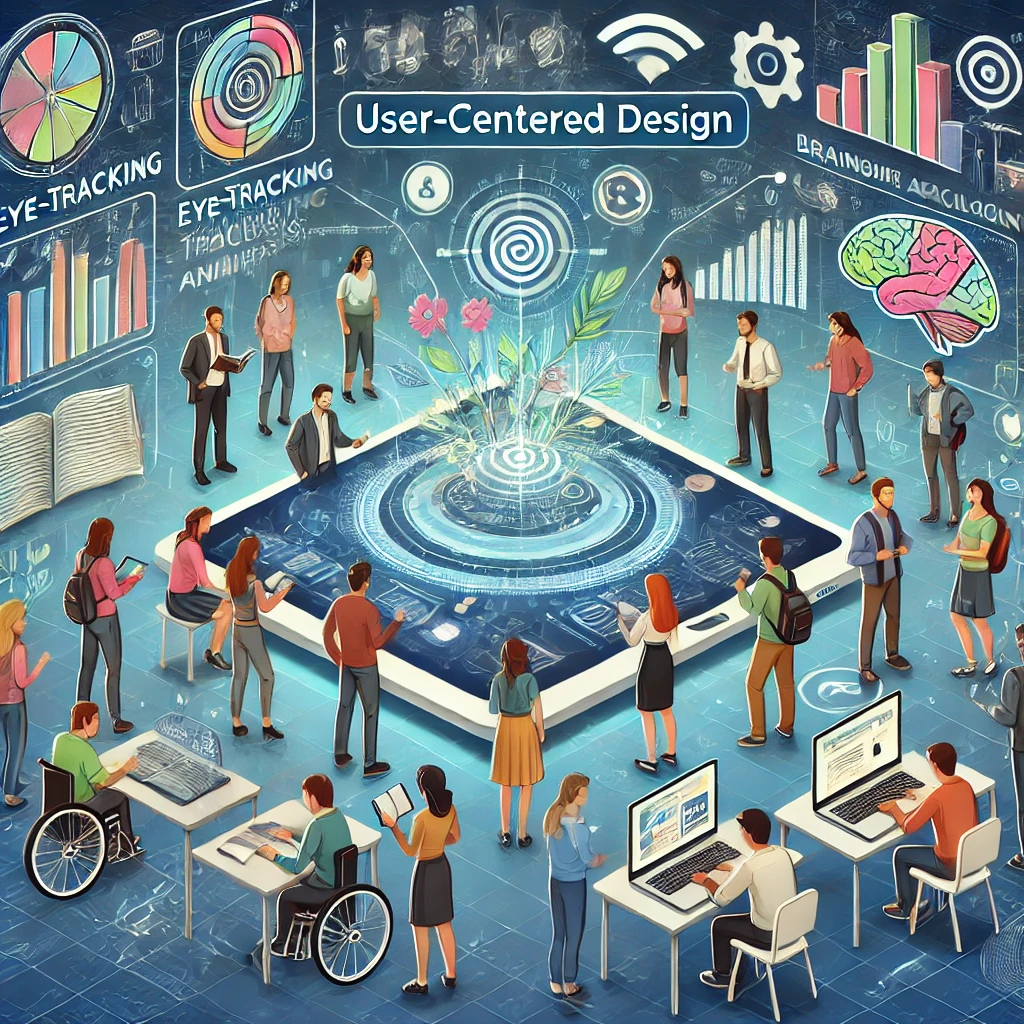As technology continues to transform the educational landscape, the need for digital platforms that truly cater to the needs and experiences of students has become paramount. In fact, imaging the digital learning platforms as just a translation of the traditional methods corresponds to underestimating their potential [1]. This is where the concept of user-centered design (UCD) shines, offering a crucial approach to developing digital education tools that engage, empower, and include learners. The UCD foresees a novel approach to the learning experience, where the educational contents are tailored and personalized according to the specific learner profile. This is indeed not possible through the traditional learning approach, and it would consistently improve the learning experience in terms of accessibility and inclusivity [2].
User-centered design is a design philosophy that places the user’s needs, preferences, and goals at the heart of the development process [3]. Rather than starting with technology or business requirements, UCD begins by deeply understanding the target users – their pain points, behaviors, and aspirations. This user insight then drives the entire design and development lifecycle.
In the context of digital education platforms, UCD is especially vital [2]. These platforms serve as the virtual classrooms and learning hubs for students, who have diverse needs, learning styles, and digital fluencies. By adopting a user-centered approach, platform developers can ensure that the final product aligns seamlessly with the ways students actually want to engage with educational content and tools.
The SOULSS project, with its focus on addressing the challenges posed by digitalization in education, stands to greatly benefit from embracing user-centered design principles, in particular by:
- Fostering Engagement: By deeply understanding the preferences, motivations, and pain points of students, the SOULSS platform can be designed to captivate and engage the new generation of learners. Features, interactions, and content can be tailored to match their natural behaviors and expectations, making the platform intuitive and rewarding to use [4].
- Enhancing Effectiveness: With user needs at the forefront, the SOULSS platform can be optimized to support effective learning. User insights can inform the information architecture, interaction design, and even the pedagogical approach, ensuring that the platform empowers students to achieve their educational goals. In fact, tailoring educational content according to the students’ profile would increase motivation and engagement.
- Promoting Inclusivity: User-centered design inherently prioritizes inclusivity, as it requires understanding the diverse needs and abilities of the target audience. This approach can help the SOULSS platform accommodate students with different learning styles, physical abilities, and digital literacies, ensuring equitable access and participation. In this regard, SOULSS platform offers contents according to the Universal Design for Learning (UDL), an educational framework that promotes inclusive and flexible learning by addressing the diverse needs of all learners, including those with disabilities or neurodivergences.
To further bolster the user-centered approach, the SOULSS project can leverage neuroscientific techniques to gain even deeper insights into the cognitive and emotional experiences of students. Tools like eye-tracking, electroencephalography (EEG), and other biosignals recording systems, can provide crucial data on how users engage with digital interfaces, process information, and respond to various stimuli [5]. Such an integration will be completed after the experimental trial focused on the validation of the platform.
By incorporating these neuroscientific insights into the UCD process, the SOULSS team can make more informed decisions about the platform’s design, content, and interaction models. This can lead to a learning experience that is not only engaging and effective, but also grounded in a profound understanding of the student’s cognitive and emotional needs.
In conclusion, user-centered design will be a pillar of the SOULSS research approach. By putting the user first and leveraging neuroscientific techniques, the SOULSS project can create a platform that truly empowers, engages, and includes the new generation of learners.


